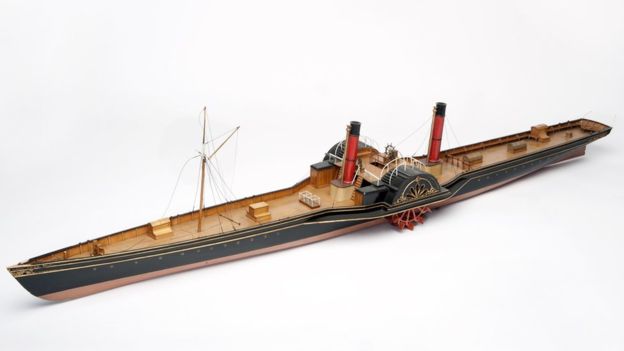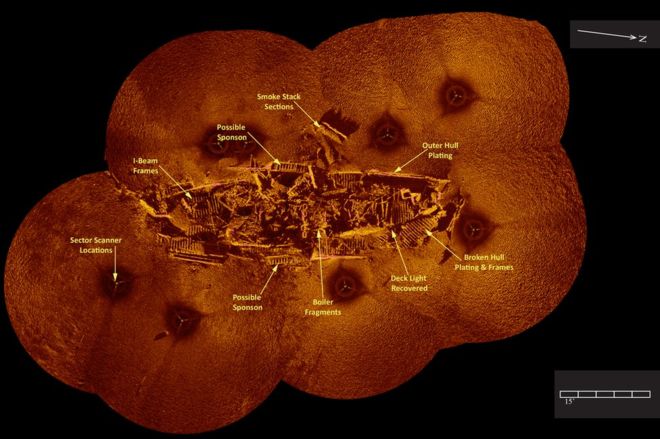One of the main objectives of Confederate forces in the American Civil War was to evade Union ships that were blocking Southern ports. For this purpose, the Confederates accumulated hundreds of Clyde-built boats from Glasgow, the hub of Scottish Shipbuilding. These Scottish ships were fast and maneuverable, and ideal for this kind of work.
There was a shipwreck off Oak Island, North Carolina, the wreck of a blockade runner called Agnes E. Fry. A team of divers, sonar experts, and archaeologists created an image of the wreck called a sonar mosaic. The North Carolina Department of Natural and Cultural Resources released some additional photographs. They appear to be images of a deck light and a handle from a homemade knife that was recovered from the wreckage. The value of the sonar mosaic is that it will aid archaeologist’s intentions to explore the wreck site further.
The Charlotte Fire Department sent specialist divers to work with sonar experts from Nautilus Marine Group. They assisted archaeologists from the department of Natural and Cultural Resources and the Institute of Maritime Research. The main goal was to record the entire wreck site with digital sonar scanning .
The Agnes E. Fry went by the name Fox when it was launched on the Clyde. On December 27th, 1864 it sank after running aground. Confederate soldiers were there defending the entrance of the nearby Cape Fear River, but it seems they never thought to salvage the ship’s cargo.

Union forces blockaded Confederate ports whenever possible. It was a strategy to keep supplies from reaching the South. It was also an effort to prevent cotton and marketable items from being exported by the Confederacy.
The Iona I was another Clyde-built ship that was acquired to further the blockade strategy. Before Confederate agents bought it, the ship operated on Glasgow to the Highlands passenger route. However, it never made it into the war. In 1862, it sank in the Clyde near Gourock due to a collision with another ship.
